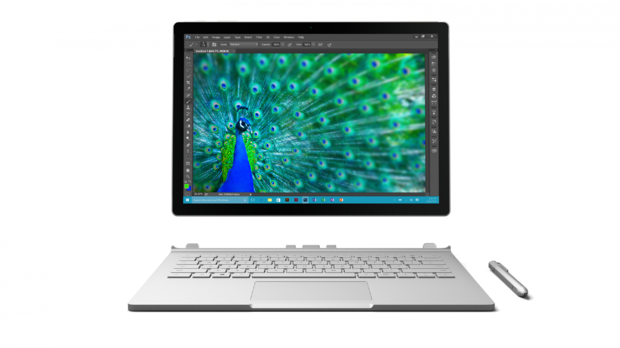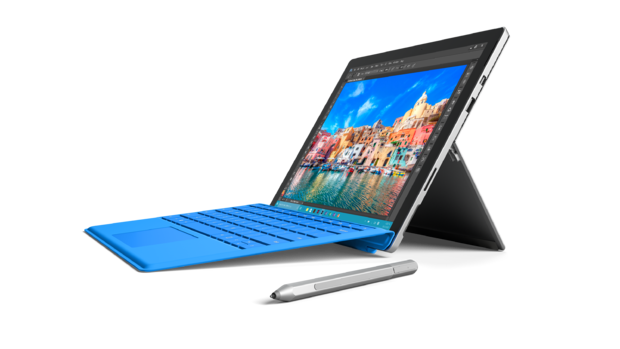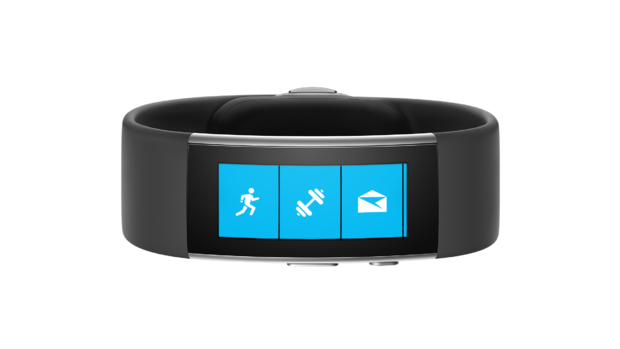Microsoft unveils new laptop-tablet hybrid and touts virtual reality HoloLens
Microsoft is doubling down on its Surface devices business, unveiling a new laptop Tuesday alongside an updated tablet.
Even as Microsoft has positioned the Surface as a laptop replacement, it's making a separate Surface laptop model, the Surface Book. Microsoft says it's for scientists, engineers and gamers who need a lot more performance than a tablet.
The laptop starts at $1,499, compared with $899 for the new Surface Pro 4 tablet. Both devices will come out later this month. And while the Surface Book is called a laptop, the screen is detachable so that it effectively becomes a tablet. The company touted its clipboard-like functions for people on the go.
The Surface Pro 4 tablet is faster and thinner than before, yet it comes with a slightly larger screen at 12.3 inches.
CNET Senior Editor Jeff Bakalar pointed out that when Apple released its latest iPad in September, the company took a page out of Microsoft's playbook by giving it a bigger, 12.9-inch screen. "Obviously, Apple did take a little influence ... with their iPad Pro," he told CBS News.
Surface sales have picked up after a slow start. Revenue from tablets and accessories more than doubled in April-June quarter to $888 million. Microsoft is hoping for a further boost from the successful summer launch of Windows 10, which had favorable reviews. The Surface Book and Surface Pro 4 are the first Surface devices to ship with Windows 10 already installed, though older models are able to get free upgrades.
Although the Surface still represents a small part of Microsoft's overall business, it provides a window into the company's various ad-supported services, including search and maps.
At the closing of a nearly two-hour event in New York, CEO Satya Nadella said that the devices are part of Microsoft's vision "to move people from needing Windows to choosing Windows to loving Windows."
Earlier, Microsoft unveiled two new phones and a fitness tracker as it continues efforts to reduce its dependence on personal computers and traditional software.
The new Lumia 950 and 950 XL phones will work with an optional dock. You can attach a regular monitor, keyboard and mouse and work with apps on the phone just like you would on a Windows 10 desktop.
Microsoft has struggled to make phones that run Windows. Over the summer, the company wrote down the value of Nokia's phone business, which it bought just a year earlier, for $8.4 billion. It also announced 7,800 job cuts in the phone business.
Microsoft is hoping to lure those who use Windows desktops and laptops regularly. The new phones are better at complementing those devices than iPhones and Android phones.
"It's tough to make time to listen to Microsoft when it comes to smartphones, because -- let's be honest -- their phones are not popular, but they have an idea, or at least a sort of inkling that they can maybe infiltrate the market a little bit with their Windows 10 revamp," Bakalar said. "They did make a dent with their Surface tablets. They think they can apply the same logic to their smartphone division and maybe make a little headway in that environment."
The new phones start at $549 and will be available in November.
The new Microsoft Band, meanwhile, now tracks elevation and works with the company's Cortana virtual assistant. It will be available for $249 starting Oct. 30.
Bakalar suggested that while the latest version of the Band -- loaded with 10 sensors to measure activity and body functions -- is "bigger and better" than Microsoft's other attempts to make its mark in the fitness tracker world, the effectiveness of these devices is still up for debate.
Microsoft also teased Xbox One games and console bundles and demonstrated its upcoming HoloLens virtual-reality device by showing a "mixed reality" game that combines animation with real-world objects. Unlike standard emerging virtual reality technologies, HoloLens uses augmented reality, which lets simulated images interact with the real-world space. Attacking robots navigate around your furniture and appear to break through physical walls.
This foray into virtual reality gaming has generated some of the most buzz out of the Microsoft event, and the demonstrations didn't fail to impress.
"They've done some really impressive stuff with their demos," Bakalar said. "It's kind of what it's only been right now. It's just a demo ... this is pretty spectacular stuff."
Developers will be able to buy a prototype early next year for $3,000.
Bakalar added that no one knows what the HoloLens's will cost when it's eventually available in the retail space.


